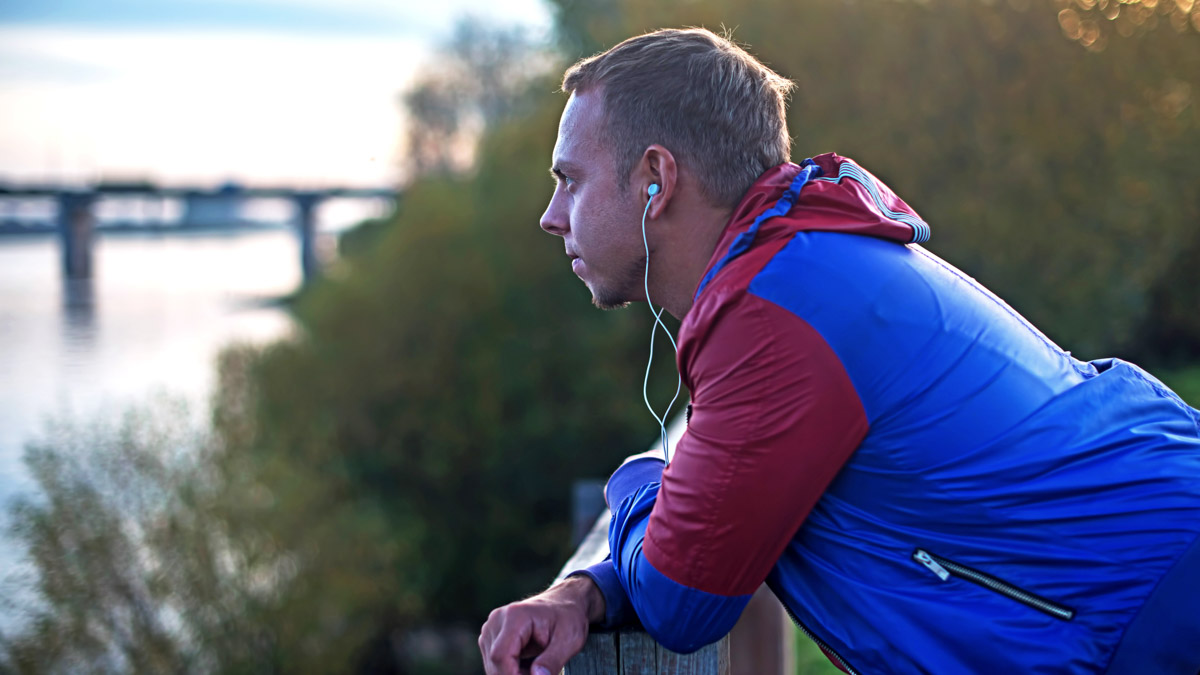If you’re a motivated competitor who loves the grind, you probably view slowing down skeptically and might even scoff at rest days. But in reality, even the best-conditioned athletes need to calendar regular time off so their bodies can respond to training stimuli, heal up, and reload for upcoming training and races. Let’s look at why you need rest days, how often you should take them, and potential pitfalls.
Training Stimulus + Rest = Adaptation
As an endurance athlete, it’s easy to obsess over every element of your training, particularly if you have a partner, coach, or group to geek out on the details with. While there’s nothing wrong with this, if you’re not also fine-tuning your recovery, you’re missing out on half of the performance equation.
Exposing your body to sufficient load is a must-have for improvement. But if you don’t build in enough rest to adapt to this stimulus, you’re going to keep spinning your wheels.
“In order to see gains in fitness, in order for the body to keep doing what you want it to do, you have to give it enough rest to repair itself,” Dr. Karin VanBaak from CU Sports Medicine & Performance Center said in an interview with UCHealth Today. “If you’re an athlete, it means taking time out from your usual sport.”
In other TrainingPeaks articles, I’ve explored why endurance athletes need to prioritize premium sleep, the case for spending at least 10 minutes on mobility every day, and the positive impact of optimal nutrition and hydration. As vital as these elements are, you’re going to undermine their potential advantages if you’re not also regularly scheduling and observing real rest days.
Insufficient recovery increases your risk of injury, compromises your immune system, decreases your performance, and makes you more susceptible to overtraining – which is often blamed when a lack of rest is the real culprit.
While the human body is capable of some incredible feats of endurance and can keep going for a long time, we’re also designed to need rest. Even the last few nomadic tribes, who move from place to place to hunt and gather food, aren’t on the go all the time. For example, a study of the Hadza in Tanzania showed that even though they’re able to travel many miles at a time, they spend up to 10 hours per day resting.
Something interesting to note about the Hadza is that when they’re not moving, they’re often squatting or kneeling on the ground. These postures require muscle activation and constant circulation that enhance the Hadza’s recovery from their arduous hunts. It also helps prevent metabolic diseases, hinting at the need for active recovery we’ll explore later in this article.
How Often Should You Take a Rest Day?
You probably heard stories about endurance athletes whose schedules seem impossible to maintain. For example, in the buildup to the Beijing Olympics, Coach Bob Bowman revealed that Michael Phelps didn’t take a single day off in four years. But this doesn’t mention the fact that even the most prolific medal winner in Olympic history fit in some days that were much lower in intensity and volume than usual. It’s also pretty unlikely that you’re trying to break Mark Spitz’s record for golds won in a single Games, in which case you have no business looking at an outlier like Phelps and trying to imitate him.
So how often should you rest? As frustrating as it might be to say it, the answer is, “It depends.”
As with training and racing, there’s no single one-size-fits-all approach to rest days. Your training age, fitness level, injury history, and time of year in the competitive calendar (offseason vs. racing season) need to be taken into account.
Signs You Need to Rest
If you’re not a professional athlete, consider contextual factors like work demands, family schedule, and how well you’re fueling, hydrating, and recovering. In an article for the American Council on Exercise, trainer Pete McCall recommends that you “schedule at least one day of complete rest from demanding physical activity every seven to 10 days.” He says that this is because the body needs an opportunity to recover from the metabolic and mechanical stress from training.
Increase your frequency of rest days if you’re struggling to hold paces in your training sessions, need to stop before you normally would, or feel unusually fatigued afterward. The same goes if your objective and/or subjective training and wellness data shows a sudden drop-off or consistent decline.
Feeling under the weather, coming back from injury or illness, frequent traveling, and struggling to get consistent sleep (we see you, new parents) are other reasons to need more rest days.
Finding the Sweet Spot
Training too much or too hard without enough recovery has negative effects on your training and health. But not training hard enough won’t generate good results, either.
In other words, there should be a sufficient stimulus in your daily programming to prompt adaptation, so you can then close the loop with rest days, sleep, and other recovery methods. Finding this sweet spot might be possible on your own if you’re an experienced athlete with a long training history. If not, this is where the experience of a coach can really help you.
If you’re only doing short training sessions or temporarily dialing back your intensity, you might be able to keep training for an entire week or 10-day block since the daily and cumulative load you’re placing on your body isn’t that great. However, if you’re in the midst of a high-mileage microcycle or have ramped up intensity through speed sessions, hill sprints, and intervals, then taking a true rest day at least once a week is a good idea.
While your work capacity and load tolerance increase the harder, longer, and more often you train, you’re bound to reach a point of diminishing returns. And nobody – not even Eliud Kipchoge, Chelsea Sodaro, or Kristian Blummenfelt – can get away with eliminating rest days.
Doing Rest Days Wrong: Avoid These Mistakes
Going Too Hard on Easy Days
Have you ever been out on what’s supposed to be a recovery run or ride and thought, “I actually feel pretty good…maybe I’ll go a little faster”? (Don’t lie, we’ve all been there.) You probably hit the gas just a bit at the beginning, but before you knew it, you were pushing yourself to a training pace.
If this seems familiar, then you might be short-changing what’s meant to be a restorative activity and turning it into one that’s placing more load on your system. As a result, your body doesn’t get the break it needs, which could negatively affect your next training session or race.
Doing Nothing At All
At the other end of the scale, maybe you tend to shut down all movement on rest days. If you’re badly injured or coming off a hellacious ultra or triathlon, perhaps this is necessary. But stopping completely can backfire and make you even more sore. It can also slow down your digestive, lymphatic, circulatory, and other systems needed to stimulate recovery.
A better approach is to do something that gets you moving without firing up your competitive juices. Throw a ball or frisbee with your kids, take a walk with your significant other, or use an e-bike to cruise around town. This way, you fit in some movement without placing mechanical strain on your muscles, joints, and connective tissues.
Not Eating Enough
Another common rest day mistake is thinking that you should eat less. Certainly, you won’t be burning as much fuel as usual through exercise, but because you’re training regularly, your base metabolic rate is still high, so you require more energy than you might imagine when you’re minimally active.
Keep your protein intake up as your body continues to recover from your most recent training session. The amino acids found in protein are the building blocks for muscle repair and are necessary even on recovery days. You also need plenty of carbs to restore glycogen levels that were likely depleted during training earlier in the week. Due to its high-calorie content – nine per gram versus four for protein and carbs – healthy fats ensure you’re not digging yourself into a deficit on rest days.
“Rest day nutrition should look very similar to training days,” registered dietician Meghann Featherstun wrote. “It’s important to look at your week as a whole rather than one single day. We want to make sure we are eating balanced meals and fueling our bodies enough for recovery and the work to come in the following days.”
Lean into Active Recovery
In addition to doing some easy, movement-based activities that won’t tempt you into full-on training, your next rest day might be the perfect opportunity to try different kinds of active recovery.
One of the myths about load management in pro sports is that an athlete who isn’t playing is just sitting around. That simply isn’t true. They’re still working on certain elements of their physicality in ways that don’t bring mechanical or metabolic stressors to bear.
You could do likewise with practices such as mobility work or yoga. Combining these with conscious breathwork can help you downshift your autonomic nervous system from sympathetic high alert into parasympathetic recovery. A study published in Breathe compared several patterns and found that taking six breaths per minute with an even five-second inhale and exhale led to “synchronization of sympathetic and parasympathetic systems.” The authors suggested that this could help regulate the body’s response to physical and mental stress.
Try taking a relaxing soak in a hot tub or bath, both of which will soothe your aching muscles and prompt a relaxation response. If you’re super sore from training or racing, consider treating yourself to a massage. All of these are forms of participatory recovery that have a calming and restorative effect that’s difficult to tap into when you’re in the thick of a busy week of workouts.
Like all elements of human performance, dialing in your rest days requires some trial and error. Consider expert input from your coach and combining what your wearables data suggests with what your body is telling you.
Your strategy might change in response to training and racing load, but if you can get adequate rest and nail the other elements of your recovery, you’ll likely see some positive effects on your performance, well-being, and how you feel from day to day.
References
Ansorg, R. (2007, February 7). Rest and recovery are critical for an athlete’s physiological and psychological well-being. Retrieved from https://www.uchealth.org/today/rest-and-recovery-for-athletes-physiological-psychological-well-being/
Featherstun, M. (2023, January 22). Save this for your Rest Day nutrition reminder. Retrieved from https://www.instagram.com/p/Cnt9DuIuvLb/?img_index=9
McCall, P. (2018, December 18). 8 Reasons to Take a Rest Day. Retrieved from https://www.acefitness.org/resources/everyone/blog/7176/8-reasons-to-take-a-rest-day/
Raichlen, D. et al. (2020, March 9). Sitting, squatting, and the evolutionary biology of human inactivity. Retrieved from https://www.pnas.org/doi/10.1073/pnas.1911868117
Russo, M. et al. (2017, December). The physiological effects of slow breathing in the healthy human. Retrieved from https://www.ncbi.nlm.nih.gov/pmc/articles/PMC5709795/








